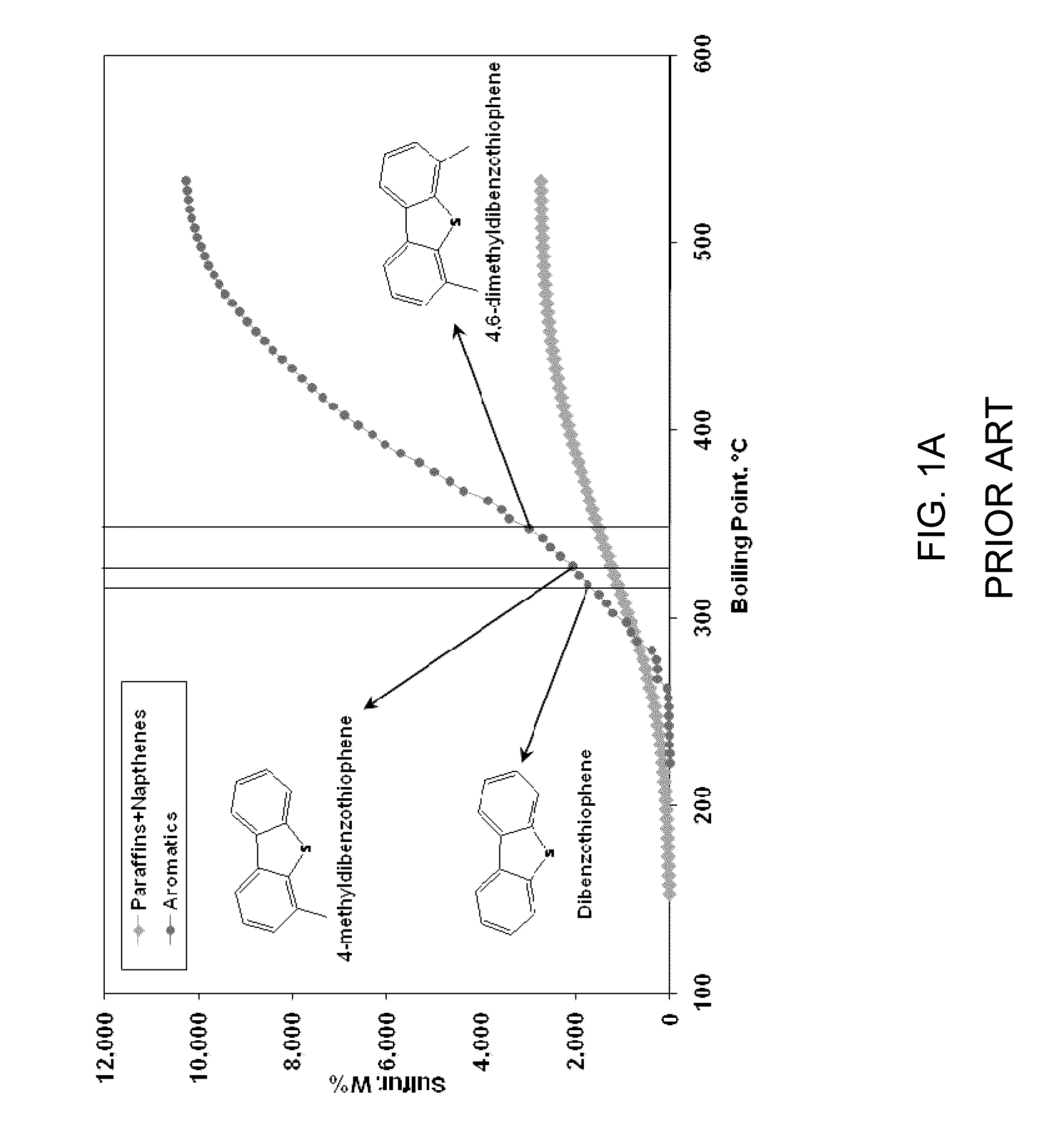Integrated desulfurization and denitrification process including mild hydrotreating and oxidation of aromatic-rich hydrotreated products
a technology of aromatic-rich hydrotreatment and desulfurization, which is applied in the direction of chemical/physical/physical-chemical stationary reactors, chemical/physical/physical-chemical reactor details, refining to eliminate heteroatoms, etc., can solve the problems of difficult upgrade of existing hydrotreating reactors in these facilities, hinder the removal of sulfur atoms, and pose health and environmental problems, so as to achieve the effect of reducing the cost of capital equipment and operating costs, reducing the cost of process
- Summary
- Abstract
- Description
- Claims
- Application Information
AI Technical Summary
Benefits of technology
Problems solved by technology
Method used
Image
Examples
example
[0092]A straight run (SR) gas oil was hydrotreated in a fixed bed reactor at 30 Kg / cm2 hydrogen partial pressure, 340° C., a liquid hourly space velocity of 1.44 h−1 and at a hydrogen to oil ratio of 280 Liters / Liters. The properties of the SR gas oil are given in Table 3. The sulfur content of the gas oil was reduced from 13,000 ppmw to 662 ppmw.
[0093]
TABLE 3SR GasHydrotreatedPropertyUnitMethodOilProductDensity @ 15.6° C.Kg / LtASTM D40520.8500.850Sulfurwt %ASTM D42941.30.0662Nitrogenppmw17891Aromaticswt %31.529.5Paraffins andwt %68.570.5NaphthenesDistillationASTM D2892IBP° C.5253 5 wt %° C.186187 10 wt %° C.215213 30 wt %° C.267262 50 wt %° C.304299 70 wt %° C.344338 90 wt %° C.403397 95 wt %° C.426420100 wt %° C.466463
[0094]The hydrotreated gas oil was then passed to a counter-current aromatic extraction unit to separate the products into an aromatic-rich fraction and an aromatic-lean fraction. The extractor was operated at 60° C., atmospheric pressure and at a solvent-to-diesel ra...
PUM
| Property | Measurement | Unit |
|---|---|---|
| hydrogen partial pressure | aaaaa | aaaaa |
| hydrogen partial pressure | aaaaa | aaaaa |
| hydrogen partial pressure | aaaaa | aaaaa |
Abstract
Description
Claims
Application Information
 Login to View More
Login to View More - R&D
- Intellectual Property
- Life Sciences
- Materials
- Tech Scout
- Unparalleled Data Quality
- Higher Quality Content
- 60% Fewer Hallucinations
Browse by: Latest US Patents, China's latest patents, Technical Efficacy Thesaurus, Application Domain, Technology Topic, Popular Technical Reports.
© 2025 PatSnap. All rights reserved.Legal|Privacy policy|Modern Slavery Act Transparency Statement|Sitemap|About US| Contact US: help@patsnap.com



